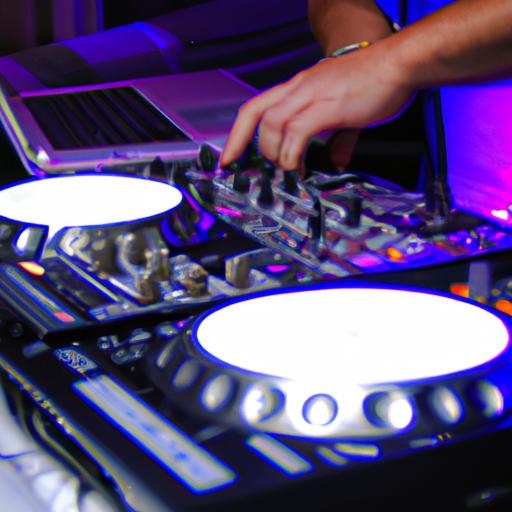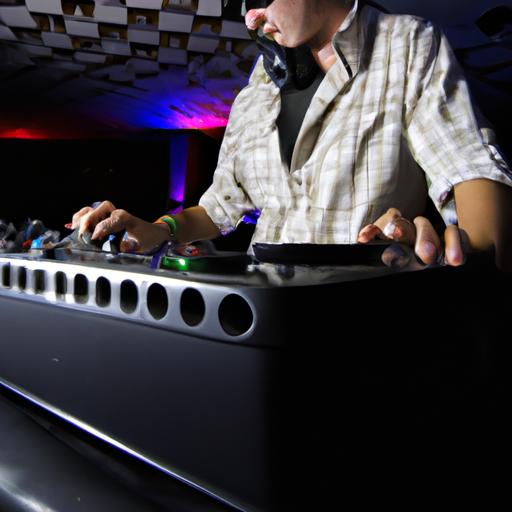DJ Club Mixing 101: A Comprehensive Guide

Are you interested in becoming a DJ or looking to enhance your DJ skills? One of the most important aspects of being a successful DJ is mastering the art of DJ club mixing. In this article, we will provide you with an in-depth guide to DJ club mixing, covering various techniques, essential equipment, popular software, and useful tips for beginners.
Understanding DJ Club Mixing
DJ club mixing is the skillful practice of seamlessly blending two or more tracks together to create a continuous and uninterrupted flow of music. This art encompasses beatmatching, phrasing, EQing, and the use of effects to develop a distinctive and dynamic sound. Successful DJs engage their creativity and technical expertise to captivate and entertain the crowd throughout their performances.
The Significance of DJ Club Mixing
Mastering the art of DJ club mixing is vital for a successful career as a DJ. It enables DJs to develop a unique style that sets them apart from their competitors. DJ club mixing also plays a crucial role in keeping the crowd engaged and energized, which is essential for any club or event. A skilled DJ must be able to read the crowd and adjust their set accordingly to maintain an exciting and lively atmosphere.
A Brief History of DJ Club Mixing
DJ club mixing has been a part of the music scene since the 1970s when DJs first began experimenting with blending tracks to create a new and innovative sound. The technique gained popularity in the 1980s, coinciding with the rise of hip hop and electronic dance music. DJs such as Grandmaster Flash and David Guetta became renowned for their revolutionary mixing styles. Since then, the art of DJ club mixing has evolved and grown in popularity.
Techniques for DJ Club Mixing
Whether you are a beginner or an experienced DJ, mastering the following techniques is essential for successful DJ club mixing.
1. Beatmatching
Beatmatching involves synchronizing the beats of two or more tracks to create smooth transitions. The goal is to align the beats of both tracks so they play together seamlessly. This technique requires a keen sense of rhythm and timing, as well as the ability to adjust the tempo of each track to match.
2. Phrasing
Phrasing is about matching the structure of two tracks to create a seamless transition. DJs must understand the sections of each track, including the intro, verse, chorus, and breakdown. By identifying the corresponding sections, DJs can create smooth and natural transitions between tracks.
3. EQing
Equalization (EQing) is the process of adjusting the levels of different frequencies in a track to achieve a balanced sound. DJs utilize EQing to eliminate unwanted frequencies and emphasize those they want to highlight. This technique is crucial for producing clean and polished mixes.
4. FX Usage
Effects (FX) can add depth and texture to a mix. Commonly used effects include filters, delays, and reverbs. DJs employ FX to create buildups, breakdowns, and other dynamic transitions. It is important to use effects thoughtfully and sparingly to avoid overwhelming the mix.
By mastering these four techniques, you will develop the skills necessary to become a proficient DJ club mixer. In the next section, we will discuss the essential equipment needed to get started.
Essential Equipment for DJ Club Mixing
As a DJ, having the right equipment is crucial for delivering an exceptional set. Here are the essential pieces of equipment you will need for DJ club mixing.
1. Turntables vs. CDJs
Traditionally, DJs used vinyl turntables to mix tracks together. However, with the digital music revolution, CDJs have become increasingly popular. Each option has its advantages and disadvantages, so the choice ultimately depends on personal preference. Turntables provide a tactile and hands-on experience, while CDJs offer more features and flexibility.
2. Mixers
A mixer is the central component of any DJ setup. It allows you to blend multiple audio signals together and control various aspects such as levels, EQ, and effects for each channel. There are different types of mixers available, ranging from basic two-channel mixers to advanced four-channel mixers with built-in effects and sampling capabilities.
3. Headphones
Good quality headphones are essential for any DJ. They enable you to cue up tracks and beatmatch accurately, even in noisy environments. Look for headphones with excellent sound quality, comfortable ear cups, and durable construction.
4. Speakers
To deliver your music to the crowd, you will need a reliable set of speakers. Look for speakers that offer high sound quality, strong bass response, and sufficient power to fill the venue. Additionally, consider factors like portability, durability, and ease of setup when selecting speakers for your DJ setup.
In the next section, we will explore the different software options available for DJ club mixing.
DJ Club Mixing Software Options
In today’s digital age, software plays a crucial role in DJ club mixing. It enables DJs to mix tracks on their laptops, add effects, and create unique sounds. Here are some of the most popular DJ club mixing software programs available today:
1. Serato
Serato is a highly popular DJ club mixing software known for its user-friendly interface and compatibility with a wide range of DJ controllers and mixers. Serato offers various features, including beatgrids, cue points, and loops, allowing DJs to seamlessly mix tracks and create unique transitions.
2. Traktor
Traktor is another favored DJ club mixing software among professional DJs. It offers features such as beatmatching, tempo syncing, and advanced effects. Traktor is known for its compatibility with a wide range of hardware and its user-friendly interface.
3. Rekordbox
Developed by Pioneer DJ, Rekordbox is designed to seamlessly integrate with Pioneer DJ controllers and mixers, making it a popular choice for professional DJs. This software offers features like beatgrid editing, cue points, and advanced effects.
4. Virtual DJ
Virtual DJ is a popular DJ club mixing software, particularly among beginners and amateur DJs. It boasts a user-friendly interface and a range of features, including beatmatching, effects, and sampling. Virtual DJ is compatible with a wide range of hardware and is known for its affordability and ease of use.
Regardless of the DJ club mixing software you choose, take the time to learn its features and master its functionality. This will enable you to create unique and dynamic mixes that keep the crowd engaged and dancing.
Tips for Beginner DJ Club Mixers
If you are new to DJ club mixing, starting out can be overwhelming. Here are some tips to help you get started and improve your skills:
1. Practice Regularly
Consistent practice is key to improving your DJ club mixing skills. Set aside dedicated time each day to practice, experiment with different techniques, and learn new tricks. The more you practice, the more comfortable you will become behind the decks.
2. Listen to Other DJs’ Mixes
Listening to other DJs’ mixes is a great way to learn new techniques and gain inspiration for your own sets. Pay attention to how they transition between tracks, use effects, and maintain high energy throughout their sets.
3. Attend Live Shows
Attending live DJ performances is an excellent way to observe professional DJs in action and witness their crowd interaction skills. Take note of how they engage with the audience, build energy, and keep the party going.
4. Experiment with Different Genres
Don’t be afraid to experiment with mixing different genres of music. Blending diverse genres can create a unique and unexpected sound that keeps the crowd engaged and dancing. Try combining hip hop with EDM or rock with pop to create something fresh and exciting.
By following these tips and techniques, you will be on your way to becoming a skilled DJ club mixer. Remember to practice, listen, learn, and experiment to find your unique style and stand out from the crowd.
Conclusion
In conclusion, DJ club mixing is an essential skill for any aspiring DJ. By mastering techniques such as beatmatching, phrasing, EQing, and utilizing effects, DJs can create captivating and seamless mixes that keep the dancefloor moving. Additionally, having the right equipment and software can significantly enhance the quality of your mixes.
For beginners, it’s important to practice regularly, listen to other DJs, attend live shows, and experiment with different music genres. With time and dedication, anyone can become a skilled DJ club mixer.
Always remember that the key to success as a DJ is to be creative, in tune with the crowd, and, most importantly, to have fun. By incorporating the tips and techniques outlined in this article, you can elevate your DJ club mixing skills and become a sought-after DJ who delivers unforgettable performances.

